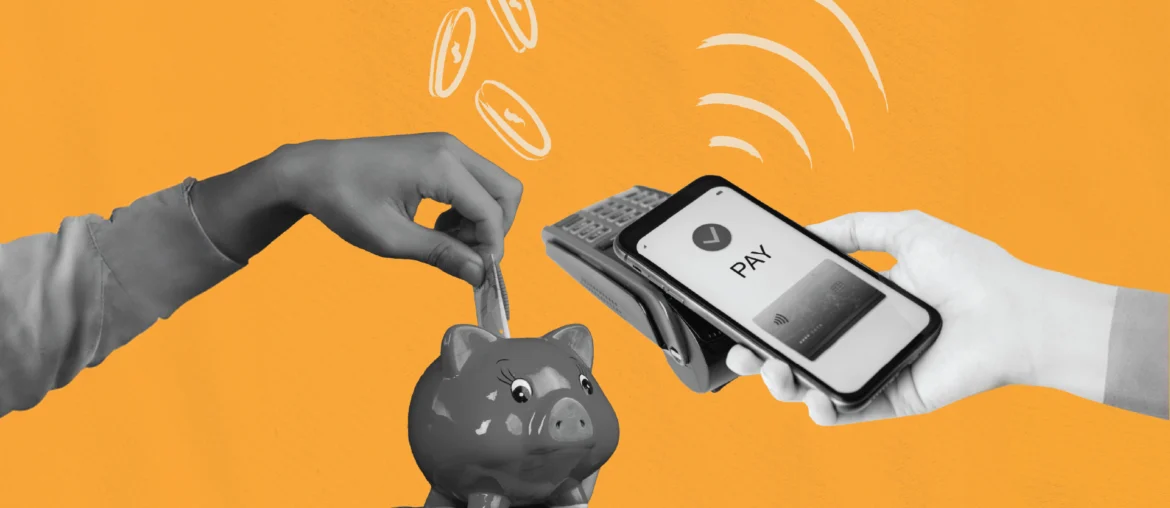As midlife parents, we grew up learning money with coins and kirana store trips. Now, with digital transactions, how do we teach our kids financial literacy? In this article, Vidya Raja, explores innovative strategies for instilling value and fostering autonomy in a cashless world.”
Collecting 10 and 25 paise coins left over from grocery shop runs.
Saving up all the money received from grandparents during summer holidays.
Waiting a whole year to get a special gift.
When we were kids, our relationship with money was very different. The only time for a big gift was a birthday or special occasion. Our parents would ask us about our wishes and promise fulfillment on our special day, teaching us patience through anticipation. Today’s world of instant gratification has eliminated this waiting period. We frequently provide children with whatever they desire the moment they express interest, inadvertently diminishing their appreciation for what they receive and obscuring their understanding of monetary value.
We would often be given a few coins and asked to run to the nearby kirana store to get some daily essentials. This trip became a lesson not just in math but also in money management. “If there’s money left, may I buy myself an ice cream?” I remember asking, and the reply would almost always be, “If there’s something left, then yes.” It then became my mission to ensure some money was saved for that ice cream, and just like that, I learned how to prioritize and use money wisely.
Today, with the digital landscape at play, parents have to navigate a very different world. There are apps for everything, including making payments, managing chores, ordering groceries and even making your monthly investments. This shift makes the concept of money abstract for young minds. This requires innovative strategies to instill financial literacy and foster autonomy. Here’s a look at how best we can help young minds understand, value, and work with money.
The digital money dilemma
The transition to digital transactions has fundamentally changed how children perceive money. Unlike physical cash, which children can see, touch, and count, digital payments are intangible, often reduced to a tap of a card or a click on a screen. This makes it extremely difficult for children to grasp the value of money. Children can be given supervised access to UPI with limited funds. Apps like “FamPay” and “Junio” are designed specifically for children and teenagers, offering prepaid UPI and card solutions with parental controls.
FamPay allows parents to create accounts for children aged 10-18, providing them with a prepaid card and UPI access while letting parents monitor transactions and set spending limits. Junio offers similar features with its prepaid card and app that works with UPI. These platforms help children learn financial responsibility in the digital age while giving parents visibility and control over their spending.
Starting with fundamentals
Establishing systems that connect effort to reward lays the foundation of financial autonomy. A weekly/monthly allowance, whether delivered in cash or through digital means, provides a practical starting point. Pencilton, an app tailored for teens allows the card to be used as a debit card for online and offline payments just like any other debit card and doubles up as a metro card, and bus card – an all-in-one card.
The method of delivery – physical cash or digital wallet, is less important than consistency. Regular allowances create predictable opportunities for children to make decisions, experience the consequences of overspending, and learn the satisfaction of saving. For younger children, starting with small amounts (e.g., ₹100-₹200 per week) tied to age-appropriate chores helps establish the link between work and income. Many families also incorporate traditional savings vehicles like the piggy bank (gullak) alongside digital options, providing children with a tangible way to see their money grow.
As children mature, parents can increase the allowance and introduce more complex financial concepts, such as saving for festivals, contributing to family celebrations, or understanding the significance of traditional saving instruments like recurring deposits and gold. This balanced approach helps children develop financial literacy while respecting cultural values around money management.
Beyond transactions: comprehensive money management
Financial autonomy encompasses more than just spending, it includes saving and giving. Many families adopt a percentage-based system like the 50-30-20 rule, where a portion of a child’s allowance or earnings goes to spending, saving, and charitable giving.
For example, a child receiving ₹100 per week might allocate ₹50 for immediate use, ₹30 to a savings goal (such as a treat or art supplies), and ₹20 to community service or any donation.
You could also consider introducing children to traditional Indian saving instruments like recurring deposits or the Post Office Savings Scheme, helping them understand the concept of interest and long-term financial growth.
Striking the balance
Parents can empower children to make informed financial decisions that reflect both personal choice and family wisdom. You could begin by involving children in household purchase decisions at local markets, teaching them to compare prices and quality—a practical skill in the diverse shopping landscape from neighborhood kirana stores to modern retail outlets. As children demonstrate responsibility, they can progress to managing small portions of festival budgets or planning family outings within constraints.
Whether through traditional methods like the piggy bank, newer options like prepaid UPI accounts, or hybrid approaches combining physical cash with digital tracking, the goal is to create consistent opportunities for children to learn through experience while respecting family financial boundaries.
If there’s a technique that has worked for your family and children, we would love to hear about it. Do share it with us in comments.




